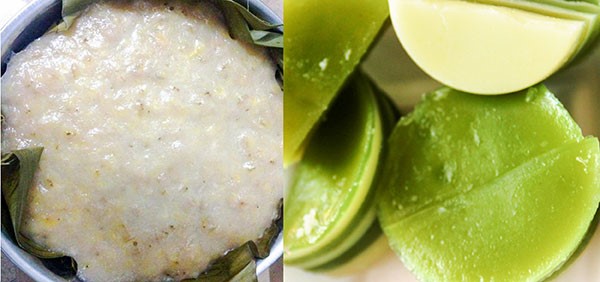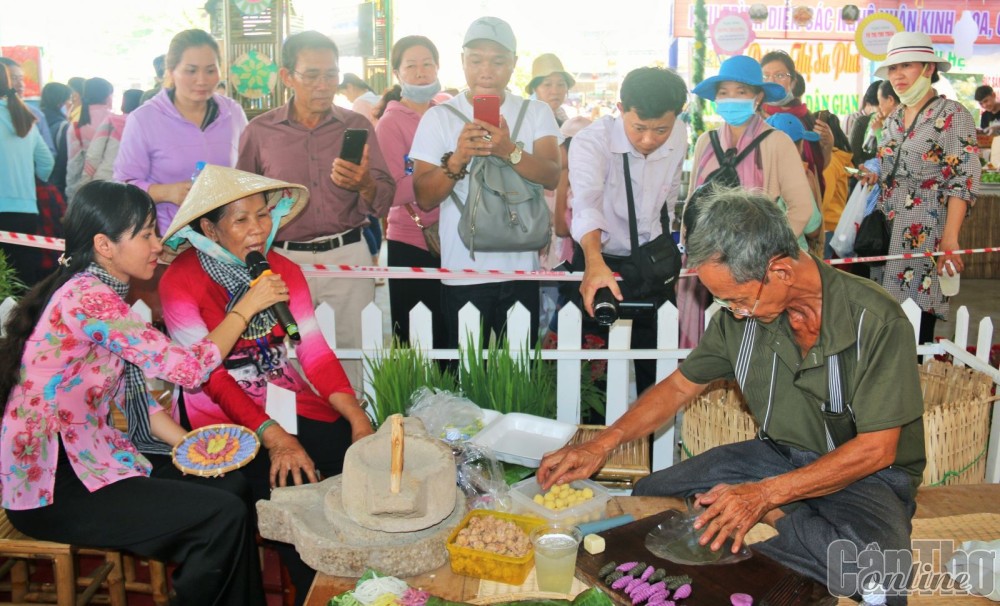
“Living in a tropical monsoon climate with a lot of sun and rain, Vietnamese people have known how to take advantage of easy-to-find natural materials to make hats for ages. Due to the rich source of raw materials, they have had a diversity of hats. For example, hats are made from palm family trees such as palm leaves, Gebang leaves, or pineapple leaves, coconut leaves ... Others are knitted from rice straws, Bambusa, or bamboo strips. All are commonly called conical hats. These materials are available in all three regions of the country, so the traditional trade of making conical hats can be found everywhere in Vietnam. Famous hat-making trade villages are in Binh Dinh (basket hats), Nghe An (hats with horse images), Hue (hats with poems), Thanh Oai, Ha Noi, etc.”(1).
Thus, this hat represents working people’s creativity. They have taken advantage of the natural environment to create objects to protect themselves from bad weather and even harsh nature despite their simplicity. The image of the conical hat also shows the cultural characters of the agricultural population, contributing to Vietnamese women’s tenderness and charm.
According to historical data, a type of hat called Ma Loi was made at Hong Chau Road, Ma Loi Village (now Hai Hung and Hai Phong Provinces) during the Tran Dynasty. In the time of Le Mat, people chose small leaves to make hats. Hats were of various styles for different classes of people, from rich to poor, from superiors to servants. By the nineteenth century, the conical hat was really shaped, showing its users’ charm and elegance. Also during this period, people from different localities like Cao Bang, Thanh Hoa, Hue ... designed their own hats, specific to their home town, contributing to the diversity of Vietnamese conical hats.
“Chu Phi might be the first to mention Vietnamese conical hats in his description of Vietnamese "loa lạp" (conical hat) in "Lĩnh Ngoại đại đáp (Linh Ngoai Questions and Answers)" in 1178. Then, in 1307, based on Chu’s writing, Ma Dan Lam described the hat again in "Văn hiến thông khảo (historical records)” as follow: “... In spiral cone shape, the hat looks like a snail ... It is skilfully made from thin bamboo strips. [...] The earliest recorded image of Vietnamese conical hats is in Tran Giam Nhu's painting "The great masters of Truc Tam going down the mountain" in around 1363. In this painting, two men are wearing hats of different shapes: the first one in a broad-brimmed hat, with a high protruding cymb above it. The other's hat is wide-brimmed, but has a pointed top.... ”(2).
In the South, the conical hat was mentioned quite early. With other costumes such as clothes, skirts, buns, ... It is once a typical cultural feature of the people of this country. This was recorded by Trinh Hoai Duc in "Gia Ðịnh thành thông chí (Unified gazetteer of Gia Dinh Citadel) as follows: "only Vietnamese follow Giao Chi's old custom: A mandarin wears a high turban, Phi Phong dress ( a kind of dressing gown), and leather shoes, barefoot commoners did their hair, boys and girls all wear short sleeves, straight collars, connected two armpits (...), wear large hats, smoke pipes, live in low houses without furniture, sit on mats on the ground ”(3).
***
Perhaps conical hats suit Vietnamese women because of their slender and slim body shape, so gradually this type of hat has become popular among both the poor and the rich across the country. It is used as a personal accessory. If ao dai becomes an identity symbol of Vietnamese culture, conical hats then have their own conquest, creating a unique cultural symbol. In cities, they are often accompanied with ao dai outfits, which combine to create the personality, elegance, and affected politeness of typical Vietnamese women. Especially the image of female students in white ao dai, with a ponytail or shoulder-length hair, wearing a delicate conical hat, leisurely riding bicycles home has become very common in poetry and music.
In the countryside, especially in rural South Vietnam, the image of the conical hat and ao Ba Ba has been associated with hard-working people. The conical hat is the companion of old people, grandparents, female villages ... in their daily life at home and at work. Whenever going to the fields, when plowing, people wear conical hats to protect themselves from the sun and the rain and use them as fans to cool themselves during lunch break while sitting next to the old trees. In particular, as their belongings, village women often wear them going to the market or use them as bags to carry some potatoes, cassava, morning glory bunches ... The hat helps complement to the gentleness, endurance, and diligence of rural ladies.
Therefore, it is reasonable to say, “Conical hats and boats have almost become inseparable objects of Southerners:

A young woman in “ao Ba Ba” and conical hat. Photo: DUY KHOI
Nào khi anh dỗ chẳng nghe,
Bây giờ xách nón chèo ghe đi tìm
(I asked you to follow me, but you didn’t;
But now you are carrying a hat, rowing a boat to look for me.)
The hat is a means of love confession:
Anh thương em đưa nón đội đầu,
Về nhà ba má hỏi, đi qua cầu gió bay
(I love you, so I give you my hat
Upon arriving home, being asked where the hat is,
I answer that the wind blew it away as I crossed the bridge.)
It is used as a reason for getting angry or having someone tested:
Năm ngoái năm xưa em còn kha khá,
Năm nay nghèo quá nên đội nón lá
Ðứt quai nên nón tròng trành,
Hỏi anh xin cắc bạc mua nón lành đội chơi”(4).
(Last year I was quite rich
This year, I am wearing a broken conical hat because of poverty.
The hat without a chin strap becomes unsteady
Can you give me some coins to buy a new hat to wear?”) (4).
In short, the conical hat, in addition to protecting people from the sun and the rain, is considered as an accessory, as a cultural symbol contributing to the formation of a serene and gentle beauty by Vietnamese women. “Despite its simplicity, both makers and users have put much affection into the hat for hundreds of years. As a piece of clothing, it has become a cultural symbol or national identity.”(5)
Nowadays, people make hats of various types and designs, of which the most popular is the convenient, neat, trendy fabric one. However, conical hats still quietly exist and develop. Almost all families have a conical hat hung at a corner for daily use when women go out for shopping or visiting neighbors. Made in a lot of beautiful, artistic, and creative forms, sizes, and designs ... they appear in most tourist destinations across the country, then follow tourists to go around the world.
--------------------
(1) Bui Quang Thang (2018), Old charm, Lao Dong Publishing House, p.52.
(2) Bui Quang Thang, ibid, pp.56-57.
(3) Trinh Hoai Duc, Gia Ðịnh thành thông chí (Unified gazetteer of Gia Dinh Citadel), translation of Tu Trai Nguyen Tao. Cultural House - Minister Office - In charge of cultural publications in 1972, Lower Book, p.6
(4) Tran Ngoc Them (Editor), Vietnamese culture in the southwestern region, Culture Literature and Arts Publishing House, p.478.
(5) Bùi Quang Thắng, ibid, p.54.
Source: Can Tho Newspaper - Translated by Diep Truong















